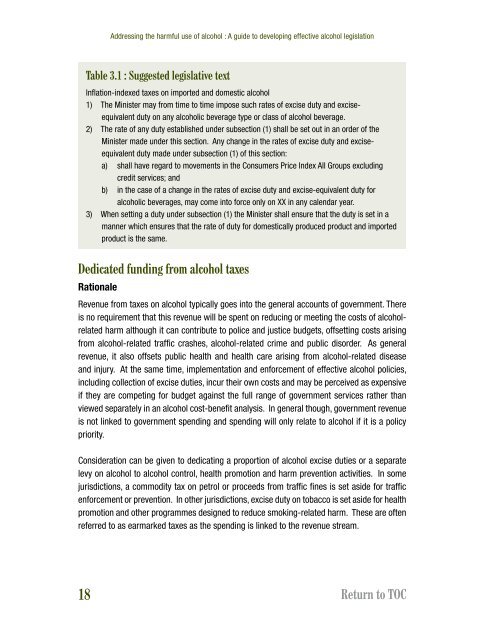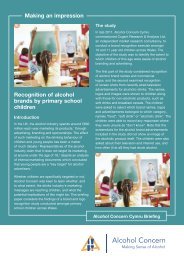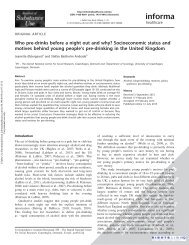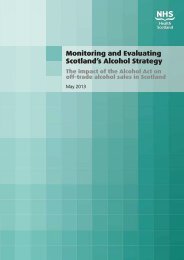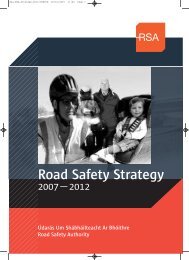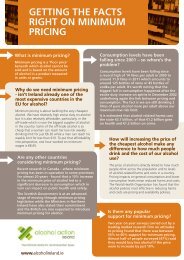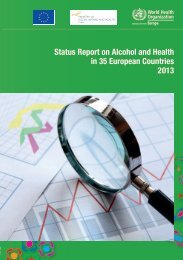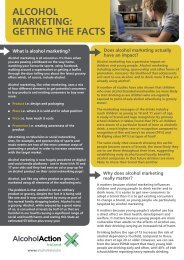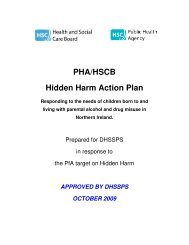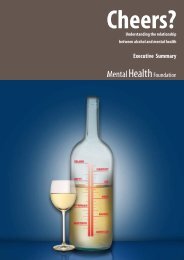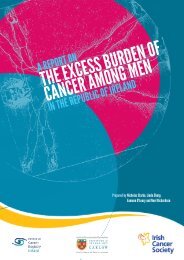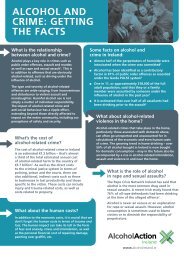Addressing the harmful use of alcohol - WHO Western Pacific Region
Addressing the harmful use of alcohol - WHO Western Pacific Region
Addressing the harmful use of alcohol - WHO Western Pacific Region
You also want an ePaper? Increase the reach of your titles
YUMPU automatically turns print PDFs into web optimized ePapers that Google loves.
<strong>Addressing</strong> <strong>the</strong> <strong>harmful</strong> <strong>use</strong> <strong>of</strong> <strong>alcohol</strong> : A guide to developing effective <strong>alcohol</strong> legislation<br />
Table 3.1 : Suggested legislative text<br />
Inflation-indexed taxes on imported and domestic <strong>alcohol</strong><br />
1) The Minister may from time to time impose such rates <strong>of</strong> excise duty and exciseequivalent<br />
duty on any <strong>alcohol</strong>ic beverage type or class <strong>of</strong> <strong>alcohol</strong> beverage.<br />
2) The rate <strong>of</strong> any duty established under subsection (1) shall be set out in an order <strong>of</strong> <strong>the</strong><br />
Minister made under this section. Any change in <strong>the</strong> rates <strong>of</strong> excise duty and exciseequivalent<br />
duty made under subsection (1) <strong>of</strong> this section:<br />
a) shall have regard to movements in <strong>the</strong> Consumers Price Index All Groups excluding<br />
credit services; and<br />
b) in <strong>the</strong> case <strong>of</strong> a change in <strong>the</strong> rates <strong>of</strong> excise duty and excise-equivalent duty for<br />
<strong>alcohol</strong>ic beverages, may come into force only on XX in any calendar year.<br />
3) When setting a duty under subsection (1) <strong>the</strong> Minister shall ensure that <strong>the</strong> duty is set in a<br />
manner which ensures that <strong>the</strong> rate <strong>of</strong> duty for domestically produced product and imported<br />
product is <strong>the</strong> same.<br />
Dedicated funding from <strong>alcohol</strong> taxes<br />
Rationale<br />
Revenue from taxes on <strong>alcohol</strong> typically goes into <strong>the</strong> general accounts <strong>of</strong> government. There<br />
is no requirement that this revenue will be spent on reducing or meeting <strong>the</strong> costs <strong>of</strong> <strong>alcohol</strong>related<br />
harm although it can contribute to police and justice budgets, <strong>of</strong>fsetting costs arising<br />
from <strong>alcohol</strong>-related traffic crashes, <strong>alcohol</strong>-related crime and public disorder. As general<br />
revenue, it also <strong>of</strong>fsets public health and health care arising from <strong>alcohol</strong>-related disease<br />
and injury. At <strong>the</strong> same time, implementation and enforcement <strong>of</strong> effective <strong>alcohol</strong> policies,<br />
including collection <strong>of</strong> excise duties, incur <strong>the</strong>ir own costs and may be perceived as expensive<br />
if <strong>the</strong>y are competing for budget against <strong>the</strong> full range <strong>of</strong> government services ra<strong>the</strong>r than<br />
viewed separately in an <strong>alcohol</strong> cost-benefit analysis. In general though, government revenue<br />
is not linked to government spending and spending will only relate to <strong>alcohol</strong> if it is a policy<br />
priority.<br />
Consideration can be given to dedicating a proportion <strong>of</strong> <strong>alcohol</strong> excise duties or a separate<br />
levy on <strong>alcohol</strong> to <strong>alcohol</strong> control, health promotion and harm prevention activities. In some<br />
jurisdictions, a commodity tax on petrol or proceeds from traffic fines is set aside for traffic<br />
enforcement or prevention. In o<strong>the</strong>r jurisdictions, excise duty on tobacco is set aside for health<br />
promotion and o<strong>the</strong>r programmes designed to reduce smoking-related harm. These are <strong>of</strong>ten<br />
referred to as earmarked taxes as <strong>the</strong> spending is linked to <strong>the</strong> revenue stream.<br />
18 Return to TOC


